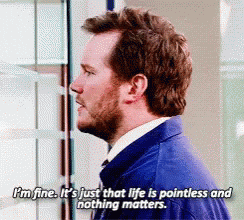Did you know that, in comparison to women, men are less likely to:
Wear sunscreen
Ask for directions
See a doctor
Seek help for their mental health
June is Men’s Mental Health Awareness month, and it’s about time we start taking men’s health seriously. Let’s look at some stats to see how our boys are at risk for adverse mental health outcomes; in particular, social isolation and poor physical health outcomes.
≈1 in 5 adolescent boys experience a mental health disorder each year
Suicide is the second leading cause of death for boys aged 10-14 and 15-19.
Boys are 3-4 times more likely to die by suicide than girls, although girls do attempt suicide more often.
ADHD is diagnosed ≈3 times more often in boys than in girls during childhood and adolescence.
≈12% of adolescent boys have experienced a major depressive episode in the past year.
Boys are less likely than girls to seek help for mental health issues, with only about 33% of boys with mental health concerns receiving treatment.
≈ 8% of adolescent boys have anxiety disorders.
Boys are more likely to externalize mental health struggles through aggression, substance abuse, and/or risk-taking behaviors.
Eating disorders affect about 0.3-0.7% of adolescent boys and often go undiagnosed.
LGBTQ+ adolescent boys face higher rates of depression, anxiety, and suicidal thoughts compared to their heterosexual peers.
From an early age, boys are often taught to be strong, self-reliant, and stoic. Showing vulnerability is pretty much discouraged. These societal expectations perpetuate the false idea that seeking help or expressing emotions is a sign of weakness, leading boys and men to suppress their feelings and avoid seeking help altogether.
Men encounter unique obstacles when it comes to seeking mental health support. Societal stigma surrounding men and boys’ vulnerability remains a significant barrier, and discourages men from acknowledging their struggles openly. This, compounded by a deeply ingrained desire to maintain self-reliance, can make the act of reaching out for help feel like a personal failure.
Many men and boys also face challenges in articulating their emotional experiences, which is a skill that's often underdeveloped due to societal expectations of masculinity.
There's also a lack of awareness about available mental health resources and support systems specifically tailored to men's needs. All these factors intertwine to discourage men and boys from reaching out for the help they need and deserve.
Here’s the thing: as you saw from the stats above, the alternative to seeking help poses severe mental and physical health consequences, including suicide, poor relationships, and limited opportunities for growth.
The silver lining is that this is soooo avoidable.
Addressing this issue requires some collective efforts from boy parents. By recognizing and addressing these barriers to seeking help, we can work to create a more supportive environment for our boys.
Here are four things we can start doing at home today:
Challenge Gender Stereotypes: Promote inclusive and diverse definitions of masculinity that encourage emotional expression and help-seeking behavior.
Provide Mental Health Education: Raise your son’s awareness about mental health issues and provide information about available resources. This will actively reduce stigma!
Create Safe Spaces: Establish an environment where your son feels comfortable discussing his emotions without fear of judgment or ridicule.
Promote Positive Role Models: Highlight male role models who openly discuss mental health and who seek help when necessary.
On another note, I would be remiss to not acknowledge Father’s Day and celebrate the evolution of modern fatherhood. Today's dads are truly redefining what it means to be a father, and they deserve our wholehearted recognition.
Modern Dads in all Their Glory
Fatherhood has evolved so much over the past few decades. Today's dads are hands-on, present, and actively engaged in their children's lives like never before.
Let’s look at some key statistics on modern fatherhood:
💪 97% of fathers now take on tasks like diaper changing, up from just 60% in 1982.
⏱️ Dads spend 3x more time with their kids compared to 50 years ago - averaging 75 minutes per day.
👨👩👧👦 There’s been a ≈70% increase since 1989 in stay-at-home dads as primary caregivers.
🤱 ≈4x more dads taking paternity leave to bond early with newborns.
Research illustrates the importance of father’s involvement in shaping children’s beliefs. In particular, father involvement is a crucial predictor of adolescents’ gender-egalitarian beliefs and plays such an important role in shaping children's perceptions of masculinity.
Through their involvement, fathers can impart values of respect, empathy, and equality, challenging stereotypes and promoting a healthier understanding of masculinity.
To the dads: your engagement matters and we're lucky to have you.





Hi Dr. Taylor! I really enjoyed this article and it was well said. I’m happy to know the society has been evolving for the better when it comes to raising kids in this world.